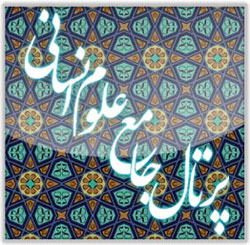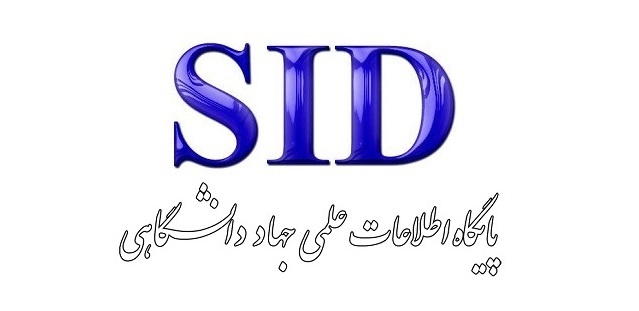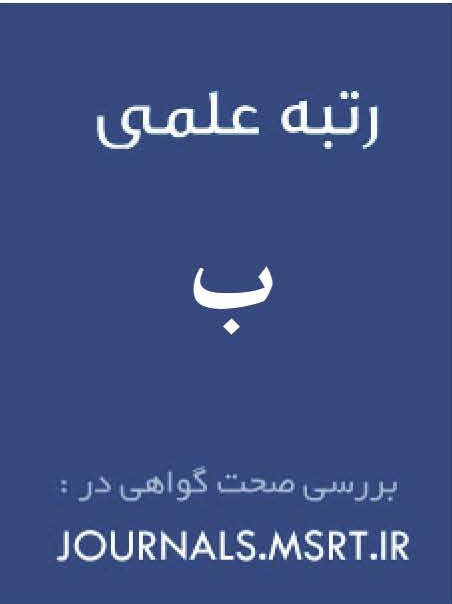Critical Discourse Analysis of Maʿārif by Bahāʾ al-Walad Using Norman Fairclough's Approach
Keywords:
Mystical texts, Baha'u'llah, Ma'arif, critical discourse analysis, Norman FaircloughAbstract
The book Maʿārif by Bahāʾ al-Walad, as a prominent mystical work, possesses distinctive structural and content-related features that set it apart from other similar texts due to its specific literary genre. This work, employing the language and rhetorical style of religious preachers, expounds upon intellectual, theological, and mystical doctrines, and in doing so, maintains a profound connection with Qur'anic teachings and the Islamic law of Muhammad. In the critical discourse analysis of this work using Norman Fairclough’s approach—at the three levels of analysis (description, interpretation, and explanation)—various layers of language and power in the text can be examined. The main objective of this research is to conduct a critical discourse analysis of Maʿārif by Bahāʾ al-Walad through the lens of Norman Fairclough's framework. The research method employed in this study is descriptive–analytical. The results of the analysis indicated that the critical discourse analysis of Maʿārif using Fairclough's model demonstrates that this mystical text not only conveys religious and mystical teachings but also interacts with the sociocultural and ideological contexts of its time. Bahāʾ al-Walad, by employing a distinctive language and a discourse rooted in spiritual and divine authority, forges a deep connection between mysticism and Islamic law. At the descriptive level, the use of religious and mystical vocabulary and terminology, emphasis on the definitiveness of verb forms, and the influence of Ashʿarite theology in his expression are evident. At the interpretive level, the relationship between the text and the historical-cultural context of the period is analyzed, reflecting the intellectual and social perspectives of the era. Finally, at the explanatory level, Bahāʾ al-Walad’s discourse is introduced as a social practice shaped by spiritual and ideological power, emphasizing individual spirituality and the Islamic identity of the community.
Downloads
References
1. Aghagolzadeh F. Descriptive Dictionary of Discourse Analysis and Pragmatics: Elmi; 2013.
2. Aghagolzadeh F. Critical Discourse Analysis: Elmi Farhangi; 2006.
3. Burns E. Michel Foucault: Mahi; 2002.
4. Pennycook A. Incommensurable Discourses. Translated by Seyyed Ali Asghar Soltani. 1999(4):118-57.
5. Jorgensen M, Phillips L. Discourse Analysis: Theory and Method: Nei; 2010.
6. Shafiei Zargar E. Critical Discourse Analysis of Administrative Dialogues in Iran. 2010.
7. Zia Hosseini M. Speech Analysis: Critical Discourse Analysis: Rahnama; 2012.
8. Fairclough N. Critical Discourse Analysis: Ministry of Culture and Islamic Guidance; 2001.
9. Moridi MR, Taqizadegan M. National Art Discourses in Iran. Cultural and Communication Studies. 2012;8(29):139-60.
10. Khatibi Balkhi MiH. Ma'arif: Tahouri; 1973.
11. Fotouhi M. Stylistics: Theories, Approaches, and Methods: Sokhan; 2012.
12. Shafiei Kadkani MR. The Language of Poetry in Sufi Prose (An Introduction to the Stylistics of Mystical Perspective): Sokhan; 2013.
13. Yarmohammadi L. Conventional and Critical Discourse Analysis: Hermes; 2004.
14. Zeravani M, Gharavi Neistani SM. Epistemology of Emotion in the Mystical System of Baha al-Walad and Rumi. Kashan Mystical Studies. 2008;4(1):153-68.
15. Golchin M. The Three Interpretations of Vision, Taste, and Union in Baha al-Walad's Worldview. Journal of Literature, University of Tabriz. 2003;64(188):45-63.
16. Anvari H, Ahmadi Givi H. Persian Grammar: Fatemi; 2009.
17. Farshidvard K. Comprehensive Grammar of Today: Sokhan; 2009.
18. Zarrinkoub A. The Value of Sufi Heritage: Amir Kabir; 2010.
19. Mayer F. Baha al-Walad (Father of Mawlana Jalal al-Din Rumi) and the Main Lines of His Life and Mysticism: Soroush; 2006.
20. Pournamdarian T. In the Shadow of the Sun (Persian Poetry and Deconstruction in Rumi's Poetry): Sokhan; 2001.
21. Sultan W. Ma'arif: Moli; 1998.
22. Sepahsalar FiA. Sepahsalar's Treatise on the Virtues of the Lord: Sokhan; 2006.
23. Aflaki Sa-DA. Manaqib al-Arifin: Donyaye KetabER -; 1983.
24. Forouzanfar Ba-Z. The Life of Mawlana Jalal al-Din Mohammad Balkhi, Known as Rumi: Zavar; 2005.
25. Zarrinkoub A. Exploration in Iranian Sufism: Amir Kabir; 2008.
Downloads
Published
Submitted
Revised
Accepted
Issue
Section
License
Copyright (c) 2025 مهناز قلی¬پور (نویسنده); شمسی علیاری; شهربانو صحابی (نویسنده)

This work is licensed under a Creative Commons Attribution-NonCommercial 4.0 International License.








